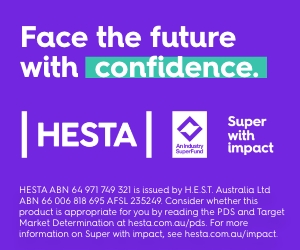The National Placement Evaluation Centre (NPEC) was established in 2018 to provide an Australian national approach to monitoring nursing and midwifery student evaluations of their professional experience placements (PEP).
The lack of a national monitoring system was questioned in a review of nursing.1 Initially funded by the Council of Deans Nursing and Midwifery Australia and New Zealand (CDNM), the Centre’s primary objective is to enhance the quality of nursing and midwifery students’ PEP learning.
Currently under the ownership of the Higher Education Services Australia (HESA), the Centre has been gathering student evaluations since late 2022. It utilises three validated Placement Evaluation Tool (PET) surveys (PET -Nursing, PET -Midwifery, PET -Supervisor). Each PET comprises 20 items measuring educational quality across two factors: clinical learning environment and learning support. An overall satisfaction with placement rating is also available (1- extremely dissatisfied – 10- extremely satisfied). The survey concludes with a text box inviting free text comments.2
Thirty-seven education providers accredited to offer nursing and midwifery degree courses are registered to distribute the evaluation tools. QR codes and weblinks are emailed to students during or just following each PEP. Registered education providers only have access to their enrolled students’ evaluations. Industry partners can register to view data from students who have undertaken PEP at their facility.
An important feature of the Centre is a real time email alert system ensuring when students are dissatisfied (less than 4 on the overall rating) education providers are alerted and enabled to quickly respond to issues and concerns. Now in the 2nd year of data collection, the database houses more than 30,000 evaluations (30 September 2024).
Analysis of the 2023 dataset (over 18,000 nursing and midwifery evaluations) identified high levels of satisfaction overall (8.27/10 (nursing) and 8.08/10 (midwifery)). However, concerns related to the quality and effectiveness of clinical learning were highlighted,3 including unprofessional staff behaviour, a lack of belonging4 and irregular constructive feedback.5 The findings also identified limits to students’ scope of practice and high student-supervisor-patient ratios as barriers to achieving learning outcomes.
A common plea from both nursing and midwifery cohorts was the need for financial support during PEP, an issue the Government has begun to address. A series of articles further investigating the 2023 outcomes seeks to deepen understanding of key concerns and to identify PEP elements and educational strategies that assist students’ learning.6,7,8,9,10 In this way NPEC continues to foster quality improvement enhancing nursing and midwifery students’ clinical learning.
Please see the website: https://npec.com.au/ for further details. Questions can be directed to director@npec.com.au
References
1. Schwartz S. Educating the nurse of the future: Report of the independent review of nursing education, Department of Health and Aged Care, Australia [Internet]. 2019 [cited 2024 October 10]. Available from: https://www.health.gov.au/resources/publications/educating-the-nurse-of-the-future?language=en
2. Cooper S, Cant R, Waters D, Luders E, Henderson A, Willetts G, Tower M, Reid-Searl K, Ryan C, Hood K. Measuring the quality of nursing clinical placements and the development of the Placement Evaluation Tool (PET) in a mixed methods co-design project. BMC Nursing. 2020;19(1):101. Available from: https://bmcnurs.biomedcentral.com/articles/10.1186/s12912-020-00491-1
3. McKenna L, Cant R, Bogossian F, Cooper S, Levett-Jones T, Seaton P. Clinical placements in contemporary nursing education: Where is the evidence? Nurse Education Today. 2019;83:104202–104202. DOI: 10.1016/j.nedt.2019.104202
4. Levett-Jones T, Lathlean J, Higgins I, McMillan M. Staff – student relationships and their impact on nursing students’ belongingness and learning. Journal of Advanced Nursing. 2009;65(2):316–324. DOI: 10.1111/j.1365-2648.2008.04865.x
5. Burgess A, van Diggele C, Roberts C, et al. Feedback in the clinical setting. BMC Med Educ. 2020;20(Suppl 2):460. DOI: 10.1186/s12909-020-02280-5
6. Bogossian F, Bloxsome D, Brown A, Cant R, Hunter S, Kearney L, Kuliukas L, Ross C, Cooper S. Confirming the validity and reliability of the Placement Evaluation Tool to evaluate midwifery practice placements (PET-Midwifery). Midwifery. 2024. (under review)
7. Cant R, Ryan C, Hughes L, Ossenberg C, Cooper S. Nursing student voices: A qualitative thematic synthesis of education elements supporting nursing students’ clinical learning during placement. Nurse Education in Practice. 2024;80:104150. DOI: 10.1016/j.nepr.2024.104150
8. Hyun A, Tower M, Bogossian F, Seib C, Ryan C, Cooper S. Factors influencing nursing student satisfaction in aged care placements: An Australian cross-sectional study. Nurse Education in Practice. 2024;79:104064. DOI: 10.1016/j.nepr.2024.104064
9. Ryan C, Hyun A, Hughes L, Bogossian F, Cooper S. Nursing student evaluations of clinical placement education quality: a national database analysis (under review). Nurse Education in Practice.
10. Stipcevich M, Davis K, Cant R, Ryan. C, Bogossian F. Nursing student clinical placement poverty concerns: a discussion paper (under review). Nurse Education Today Student Author Special Edition.
Funding: Thanks to the Council of Deans of Nursing and Midwifery (Australia and New Zealand) for funding the NPEC initial development. Thanks to Higher Education Services Australia (HESA) for funding ongoing development.
Authors
Dr Colleen Ryan, RN, PhD, SFHEA, Head of Professional Practice/Senior Lecturer, Acting Director National Placement Evaluation Centre (NPEC), Central Queensland University School of Nursing, Midwifery and Social Sciences
Professor Simon Cooper (PhD) [Patient Safety and Education Research], RN, BA (Hons), MEd, PhD, FHEA, Founding Director National Placement Evaluation Centre (NPEC), School of Nursing and Midwifery; Edith Cowan University









